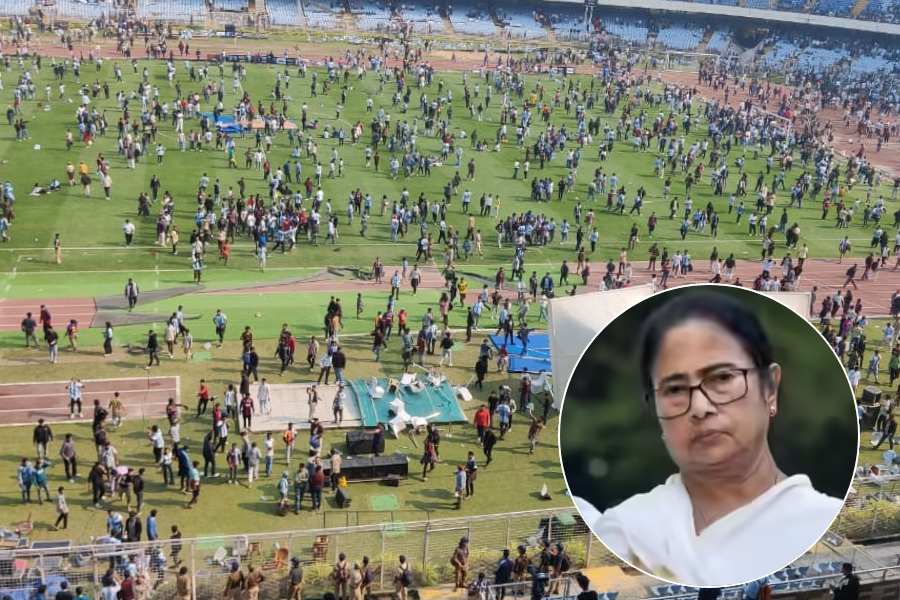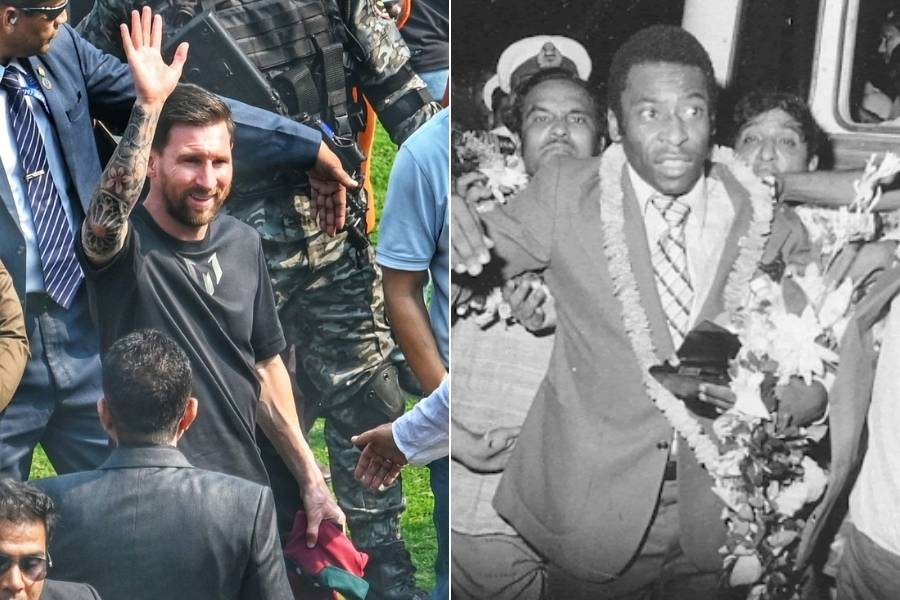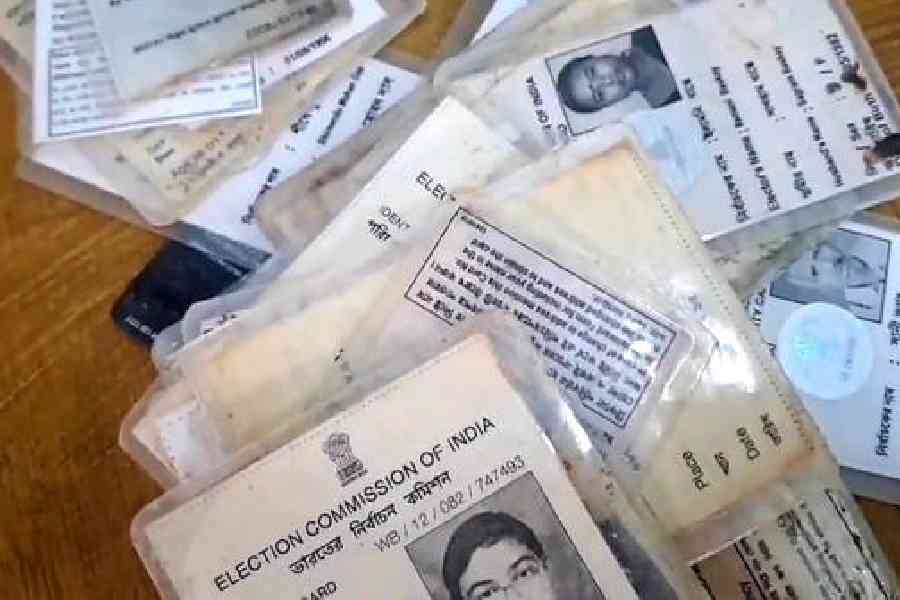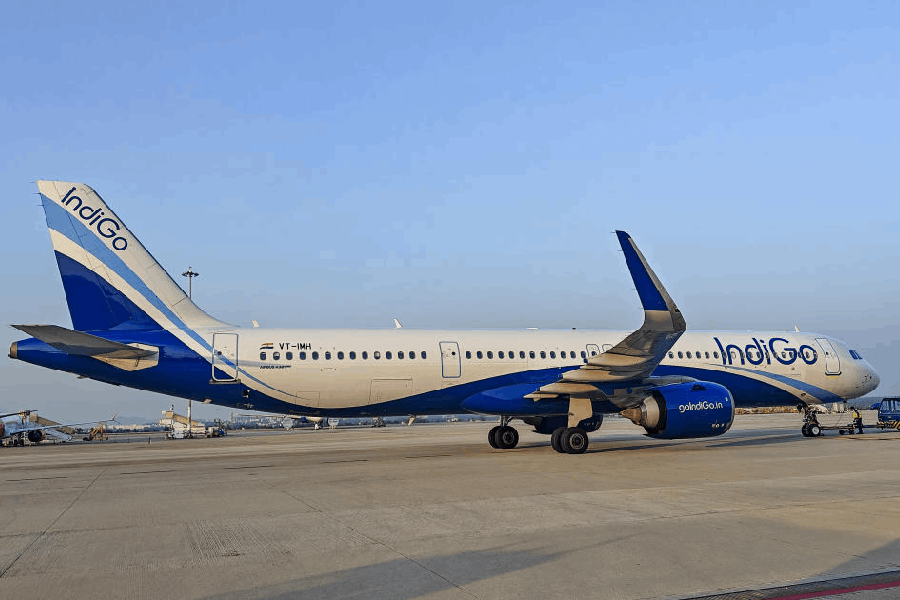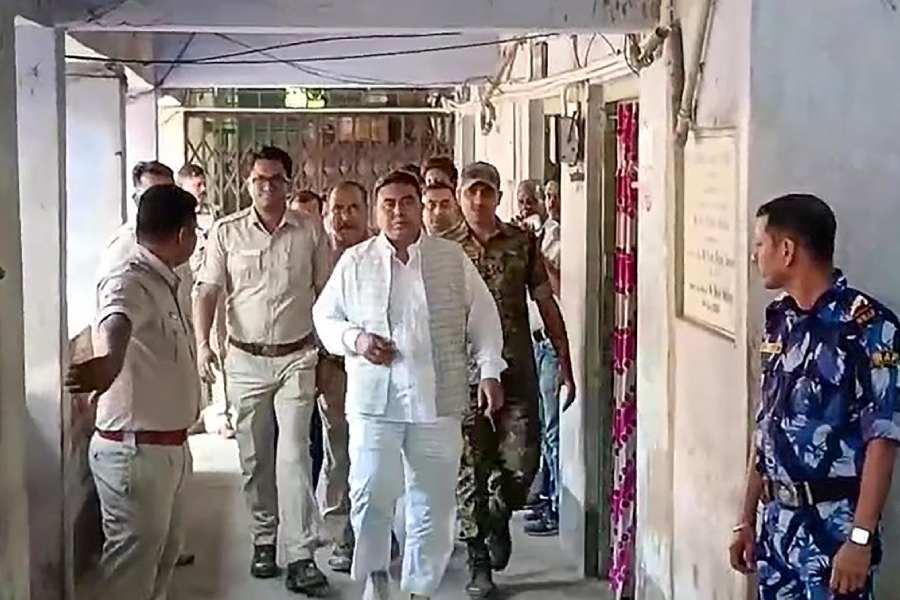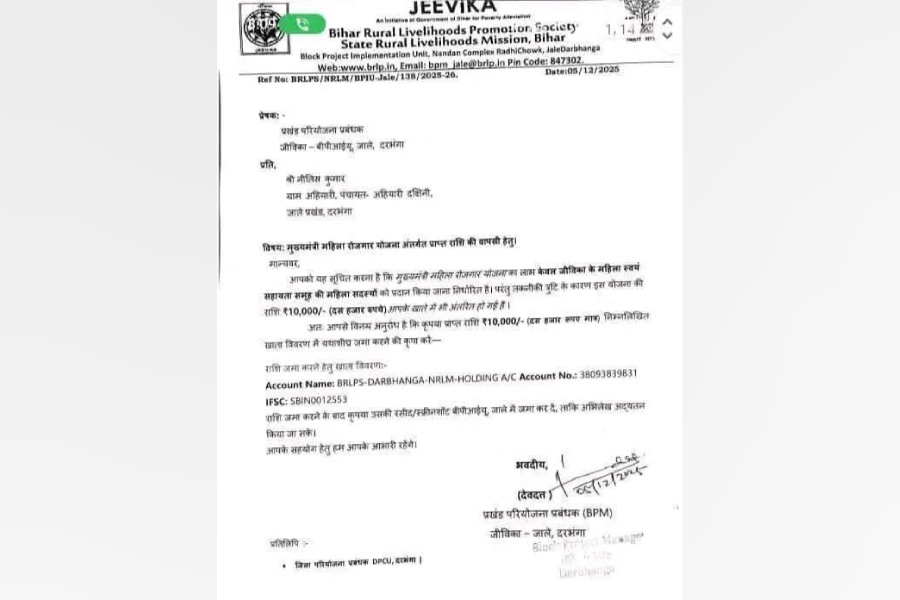 |
| Chief minister Buddhadeb Bhattacharjee at the state archive exhibition on Tuesday. Picture by Amit Datta |
Anybody who has had the misfortune of approaching the West Bengal State Archives on Shakespeare Sarani to do any research would be aware of the difficulty in even going beyond the stage of applying for permission to do so. After making several trips to the archives, there is every chance of one being told that one has to apply afresh, as one had got the application all wrong. For, the officials (if they have not left for the day after lunch break, as they usually do, or to collect salaries from Writers’ Building) do their best to discourage the public from using the archives at all.
On any given day, anybody who has reached the second floor and above of the building, in which the archives are housed, would find valuable documents, rather fragments of these, strewn all over the floor from the “stacks” up to the lifts.
Given the red tape and the diehards, one approaches with trepidation any exhibition mounted by the State Archives. Even more so when it is of photographs of our freedom-fighters selected from the records of the Intelligence Bureau. Chief minister Buddhadeb Bhattacharjee opened it on Tuesday evening. He wanted police and land records and secret letters of district magistrates to their successors to be rescued “before it was too late”.
The exhibition is in several sections and begins with the sensational Alipore bomb case, in which Aurobindo was involved. It continues with revolutionary groups such as Anushilan and Jugantar, the storming of the armoury in Chittagong, the role of fiery Midnapore and the infamous prison on the Andamans island and, interestingly, the woman revolutionaries.
Few of the photographs are really “mugshots” taken by the police. Some of them are definitely studio portraits. They show the men barebodied, in dhoti-kurtas and even in suits. Some are definitely cut out from group photographs, as in the cases of Kalpana Joshi and M.N. Roy. There are some interesting photographs of police repression on the streets of Calcutta.
The accompanying notes are sketchy, and though the freedom-fighters are identified by name, the roles they played remain in the dark. Some more explanation is expected in an exhibition whose declared purpose is to raise awareness. Exception has, however, been made in the case of 12 individuals, all of them leftists. Under the headline “In quest of radical and Left alternative”, they are Mujaffar Ahmed, Dharani Goswami, Soumendranath Tagore, Phillip Spratt, Niranjan Sen, Promode Dasgupta, Benoy Krishna Chaudhuri, Harekrishna Konar, Bejoy Modak, Bhabani Sen, Biswanath Mukherjee, Tridib Chaudhury, Manoranjan Roy and Mohini Mondal. But this is to be expected, in an exhibition that highlights the role played by the leftists in the freedom struggle —about which there remains a controversy among historians.
However, historian Gautam Chattopadhyay says it was leftists like S.A. Dange of Bombay and Mujaffar Ahmed and Abdur Razzak Khan of Calcutta who first sowed the seeds of the struggle that gained momentum with time. In 1927-28, Dharani Goswami, Gopendra Krishna Chakrabarty, Radharaman Mitra, Bankim Mukherjee and Abdul Halim were in the forefront.
Indian leftists admired the USSR and the Communist International but Netaji was elected chairman of Tripuri Congress with their support. They played a major role in post-World War II upsurge. They demanded the unconditional release of Azad Hind Fauz detainees, and during the 1946 naval revolt, the Communist banner was raised along with those of the National Congress and the Muslim League.


